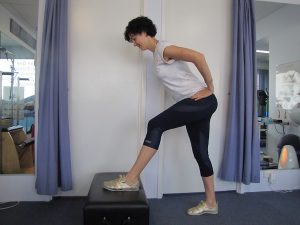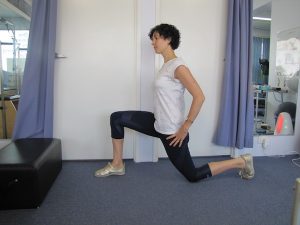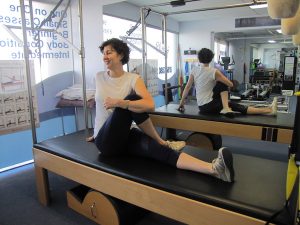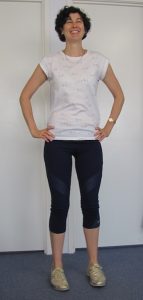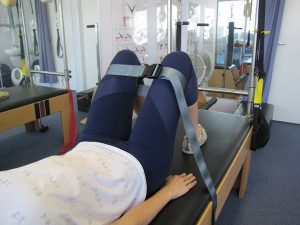…Gifts for a fit, healthy and pain free 2019
The countdown to Christmas is most certainly on but, if you’re like us, you’re still scrambling to finish the Christmas shopping. We’ve pulled together a list of perhaps unexpected, but very useful, gift ideas that we have available at Stafford Physio. We’ve got a number of budget-friendly options suited to secret Santa gifts too!
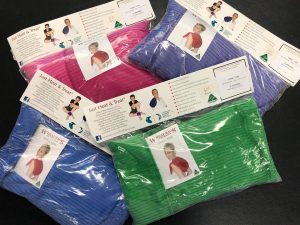 Day 1: Wheat bags and stick on heat patches
Day 1: Wheat bags and stick on heat patches
Using heat is one of the best ways to relax tight muscles, reduce joint stiffness and improve flexibility! Applying heat promotes healing by increasing blood flow to an area, and reduces pain by soothing sensory pain receptors and blocking pain signals to the brain. Our microwaveable wheat bags come in a great range of colours and sizes for neck (rectangle), back (square) and shoulders (wrap over shoulders and cover upper back). Heat in the microwave for a couple of minutes (depending on your microwave strength) and mould to your sore area for 10-15 minutes for instant relief. Our physiotherapists commonly recommend using heat for sore necks, stiff backs and relieving tight muscles. A great gift idea for mum or nanna, any students or hard-working relatives!
Sizes available: Neck $25; Back $39; Shoulders $58
Sitting in the car for long holiday trips? Try one of our stick on our heat patches for longer lasting heat ($2.50, single use)
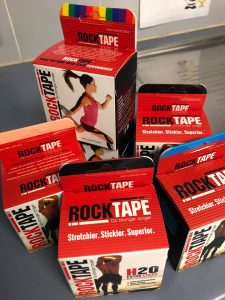 Day 2: Rock tape
Day 2: Rock tape
Need an idea for that hard to buy sibling, tennis-mad uncle or injury-prone dad?
Rock tape is a type of kinesiology tape, or elastic strapping tape, that has the ability to stretch lengthways. We often use this tape within our physiotherapy treatments to provide joint and muscle support, encourage normal and full range of movement, and improve flow of fluid or swelling, which is great for all types of injuries! Rock tape is comfortable to wear, allows you to move freely and lasts up to 5 days. It comes in a great range of colours and sizes, so you can match your team uniform or Christmas day outfit!
Drop in to purchase a roll ($22) and ask one of our physiotherapists about how to apply safely.
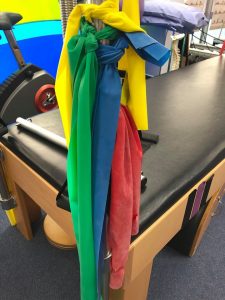 Day 3: Theraband
Day 3: Theraband
Gift your love ones the ability to be strong for Christmas! Theraband is a type of resistance band used for strengthening a wide range of muscle groups, and can be used for general exercise, post injury and rehabilitation, sport specific and Pilates type exercises. We stock a range of colours which vary in resistance, so drop in and ask one of our physiotherapists which colour would be appropriate for you or your secret Santa’s goals. We can also give you some exercises to go with it!
Resistance difficulty ranges from yellow (lightest) to red, green, blue and black (most difficult).
$5 per meter, or purchase a pack with each colour for $20
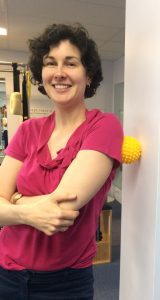 Day 4: Spikey balls and pocket physios
Day 4: Spikey balls and pocket physios
Can you think of someone who is always tight? Loves to exercise? This is the gift for them!
Spikey balls and pocket physios are perfect tools for doing self-massage or trigger point release, which is a great way to relieve pain from tight, sore muscles. Trigger point release involves applying a sustained pressure to, or gently rolling over a tight band or “knot” within a muscle. This helps to reduce pain, improve flexibility, and increase blood flow to the muscle. This can be very effective for a wide range of muscle groups, including hamstrings, gluteal muscles, shoulder, lower back and calves. At Stafford Physio we have exercise sheets to guide you with getting the most effective and safe use out of your spikey ball or pocket physio.
At just $10 for a range of sizes and colours, this is the perfect stocking filler!
Day 5: Pad pods
Is there someone in your family who is always on their phone, ipad, kindle or has their head in a book? Gift them the gift of good posture (and a pain free neck!) this Christmas, with one of our Padpods.
A Padpod is a pyramid-shaped beanbag designed to hold your phone or ipad while you are operating it, which helps to keep the screen at a comfortable angle. This effectively improves the user’s posture and alignment, reducing incidence of neck pain and injury. Padpods can be used in a range of positions, whether sitting on your lap, lying in bed, or placed on a table or desk, which means they can be used anywhere too! Perfect for work or home, or those with longer car or plane trips planned over the holidays. The Padpod holds all devices, including your phone, ipad, cookbook or novel, making it great for all ages. In a range of great colours (hence reducing fights over whose belongs to who) come in and grab one for yourself, and your loved ones.
Padpods are $29
Day 6: Pilates socks
Does someone in your family love Pilates? They will love you for gifting them a pair of our fabulous Pilates grip socks!
We currently have a great range of sizes and designs, ranging from animal print to stripes and spots as well as neutral colours, in sizes small, medium and large. These socks have non-slip grip which is perfect for safe exercise on our equipment, or any exercise where you are in bare feet, even for floor mopping days! Plus you can never have too many pairs (to match all of your active wear outfits, of course!).
Drop in and pick up a pair or two for $17 each
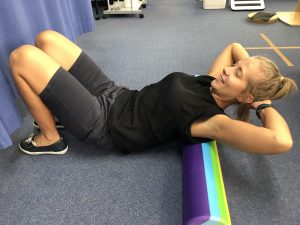 Day 7: Foam rollers
Day 7: Foam rollers
Need a gift for someone that loves to run, ride, swim, gym or, well, exercise in general really?! We guarantee they will appreciate the gift of a foam roller!
An essential piece of home workout and cool down equipment, foam rollers are basically foam cylinders that can be used to slowly roll over a particular muscle group or area, such as the calves, quadriceps, gluteal muscles, or upper back. This is a great way to perform self-myofascial release (or give yourself a deep tissue massage), which breaks up scar tissue or adhesions between muscle and fascial layers. After a big run or training session at the gym, this helps to speed up recovery and reduces risk of injury. In addition, foam rollers are great tools for mobilising your upper back, stretching your chest, as well as a huge range of core strengthening and stability exercises. Pop in and see our physiotherapists for some examples of exercises and to pick up one for you and one for a mate!
We currently have a range of colours and sizes in stock: Short $20; Long $45
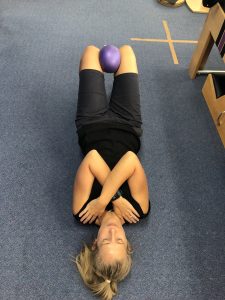 Day 8: Chi balls
Day 8: Chi balls
Chi balls are soft, inflatable balls used in many of our Pilates and rehabilitation-based exercises. The small 15cm balls are infused with an aromatherapy fragrance corresponding to its colour. Using a chi ball is a great way to challenge your core muscle strength and control, improve mobility and provide spinal support, all with a range of exercises. Great little stocking fillers, your physiotherapist is happy to give exercises for any specific injuries or gentle general exercises you can incorporate into your home program.
Chi balls come in a range of colours and have instructions and tools for inflating, $20 each
Day 9: Pilates program 10 packs
Is someone in your family a regular attendee at our Pilates classes or has always wanted to get started? Or are you looking for the perfect way to improve movement, increase strength, start exercising safely and just feel better? If so, one of our Pilates 10 packs is the ideal gift for a loved one, or a great hint to drop to your loved ones!
Stafford Physiotherapy Centre has been offering clinical Pilates for the past 7 years, with all of our physiotherapists trained in both Pilates assessment and teaching. We run small group 60 minute classes (maximum of 4 participants) 3-5 times a day from early morning (7am), mid-morning/afternoon, and evening classes, as well as Saturday mornings. We do an ensure an initial assessment and follow up one-on-one appointments prior to joining the classes, which allows us to assess any injuries, imbalances in muscle strength and flexibility, joint mobility, balance and core strength, as well as teach you how to effectively engage your core muscles. From this information we prescribe each person an individual program which we go through with you in the follow up session, and is then performed in a group class when you feel comfortable. The majority of the program involves exercising using a range of equipment, including our reformers, trapeze table, wunda chair, ladder barrel as well as smaller apparatus like swiss balls and foam rollers, with each participant in the class doing their own prescribed program. Click here for more information on Pilates.
We tailor your individual Pilates program to all ages, levels of fitness, injuries and areas of tightness or acute to chronic pain, and would love to chat to you about your exercise and health goals!
Pilates program 10 packs are currently $380 for existing patients, or $450 for patients new to the practice.
Initial assessment is $140 and follow up session $135.
Most private health funds will cover our Pilates appointments and group sessions.
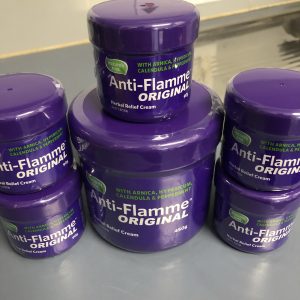 Day 10: Anti-flamme massage cream
Day 10: Anti-flamme massage cream
One of our most loved, long standing products is the anti-flamme cream. This cream has natural arnica oil with anti-inflammatory properties useful for massaging most muscle aches and pains. We often use anti-flamme within our treatments as it smells of lovely peppermint oil, and is a great consistency to massage with. Great for general joint aches and tight muscles on a daily basis or for specific sports injuries.
Priced at $20 for 90g tub, or $35 for 450g tub for true anti-flamme fans, this gift will be very well received!
Day 11: Flex-Ice packs
The freezer essential for all families, weekend warriors, elite athletes, and just Queenslanders in general is our flex-ice pack! Available in 2 sizes, these gel ice packs are easily mouldable and the best way to treat any acute pain or swollen area.
Applying ice (cryotherapy) works by reducing blood flow to an area, which is a great way to reduce swelling and inflammation and relieve nasty pain. Perfect to apply for any ankle sprains, swollen knees or after an acute muscle tear, we recommend wrapping the ice pack in a wet cloth/pillow case, and applying with the area elevated above the level of the heart if possible for 10-15minutes. Also useful to help cool down in 30degree+ Queensland weather!
Drop in to ask our physiotherapists any specific questions and grab one to take home today!
Small Flex-Ice $10; Large $16
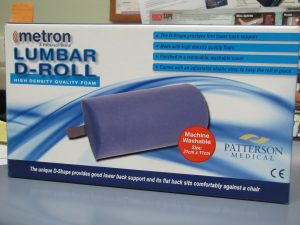 Day 12: Lumbar rolls
Day 12: Lumbar rolls
If you are travelling anywhere this Christmas, your lower back will thank you for the support of a lumbar roll! The most popular is our D-shaped lumbar rolls which have Velcro straps, meaning they can be fastened nicely to your desk chair as well as are portable for car and plane trips. The rolls work by fitting in the small of your lower back, or lumbar curve, supporting the muscles in this area and also propping you up into sitting in a neutral spinal posture. If you have a sore lower back or history of back pain or injury, we recommend you try one of these for any longer duration sitting. And remember that breaking up your journeys (in particular breaking up your sitting time), in addition to stretching and gentle exercise will almost always be a great help, ensuring you are ready for that backyard cricket match Christmas day!
D-roll shaped lumbar support $22
This post was written by Megan Tilyard, Physiotherapist and Clinical Pilates Instructor at Stafford Physiotherapy Centre.
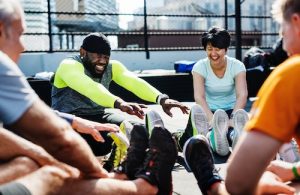
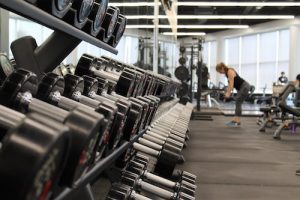 6. Include strength and core stability training
6. Include strength and core stability training 7. Get enough sleep
7. Get enough sleep
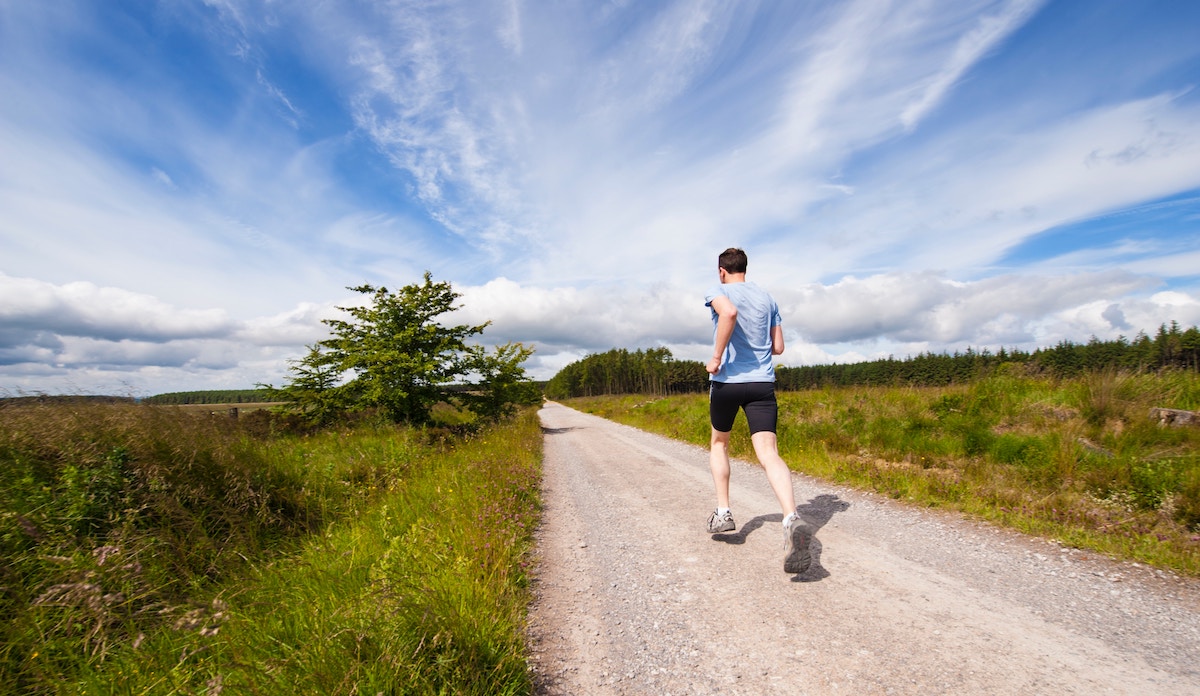
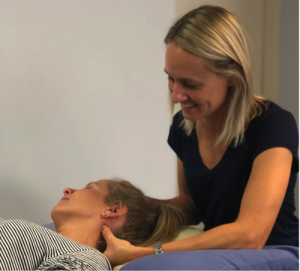 If you suffer from headaches or migraines, you’re certainly not alone. It is estimated that 1 in 20 people do! In many cases, the pain in the head actually stems from issues with the upper spine and neck. This is why around 80% of people are able to get headache relief through physiotherapy treatment.
If you suffer from headaches or migraines, you’re certainly not alone. It is estimated that 1 in 20 people do! In many cases, the pain in the head actually stems from issues with the upper spine and neck. This is why around 80% of people are able to get headache relief through physiotherapy treatment.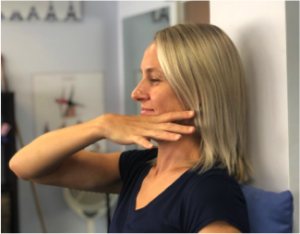 We can help prescribe some appropriate at-home exercises to help. This simple exercise that can help relieve a headache.
We can help prescribe some appropriate at-home exercises to help. This simple exercise that can help relieve a headache.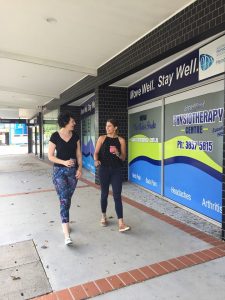

 Day 1: Wheat bags and stick on heat patches
Day 1: Wheat bags and stick on heat patches Day 2: Rock tape
Day 2: Rock tape Day 3: Theraband
Day 3: Theraband Day 4: Spikey balls and pocket physios
Day 4: Spikey balls and pocket physios Day 7: Foam rollers
Day 7: Foam rollers Day 8: Chi balls
Day 8: Chi balls Day 10: Anti-flamme massage cream
Day 10: Anti-flamme massage cream Day 12: Lumbar rolls
Day 12: Lumbar rolls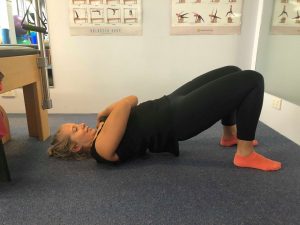 BRIDGE HOLDS
BRIDGE HOLDS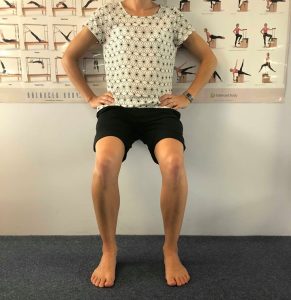 WALL SQUAT
WALL SQUAT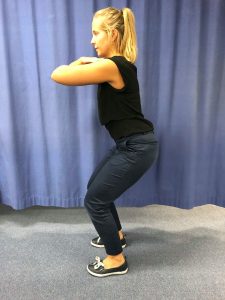 SQUATS
SQUATS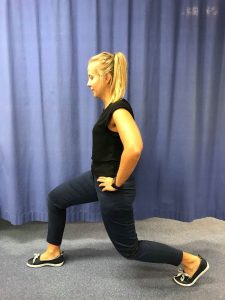 LUNGES
LUNGES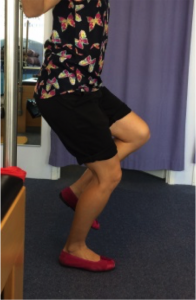
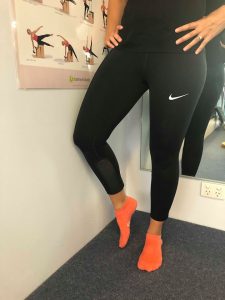
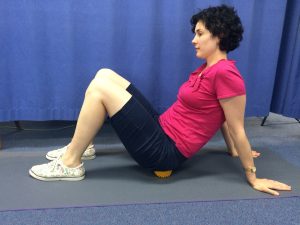 To begin with you can lean your body against the ball on the floor or wall and use your body weight to apply pressure. To progress you can roll against the ball for 1-2 minutes. Check out this handy cheat sheet featuring
To begin with you can lean your body against the ball on the floor or wall and use your body weight to apply pressure. To progress you can roll against the ball for 1-2 minutes. Check out this handy cheat sheet featuring  WARM UP SHOULD INCLUDE:
WARM UP SHOULD INCLUDE: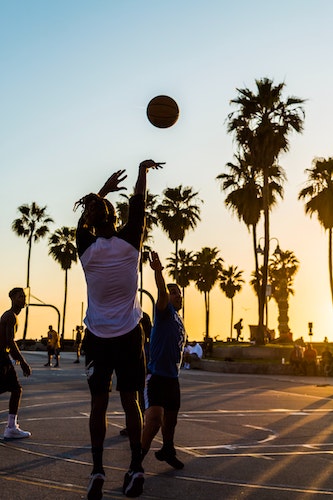 THE MAJORITY OF INJURIES IN CONTACT SPORTS INVOLVE CORKS AND STRAINS TO THE LOWER LIMBS.
THE MAJORITY OF INJURIES IN CONTACT SPORTS INVOLVE CORKS AND STRAINS TO THE LOWER LIMBS.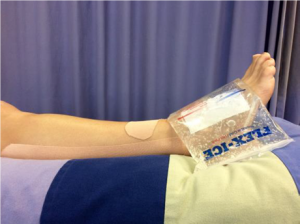 R – REFERRAL. It may be appropriate to see a health care professional such as a physiotherapist. It’s important to get an accurate diagnosis, treatment and rehabilitation to get back on the field as soon as possible.
R – REFERRAL. It may be appropriate to see a health care professional such as a physiotherapist. It’s important to get an accurate diagnosis, treatment and rehabilitation to get back on the field as soon as possible.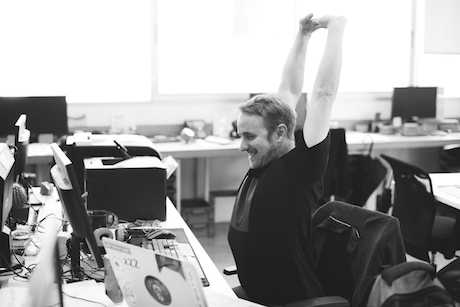
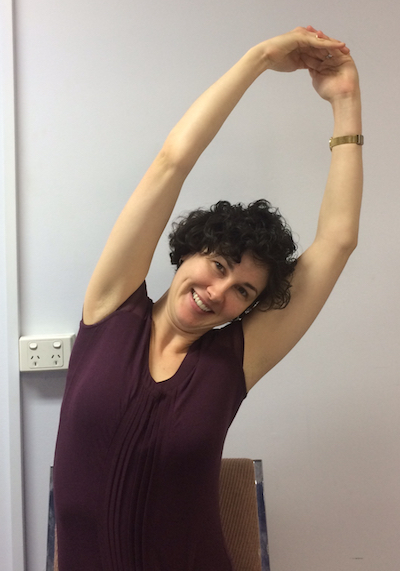
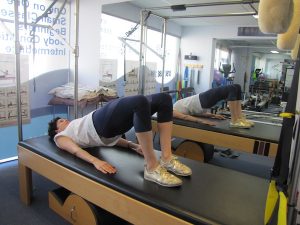 Bridging
Bridging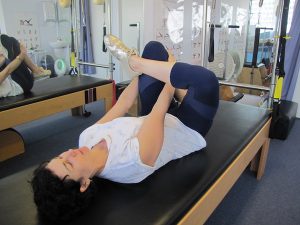
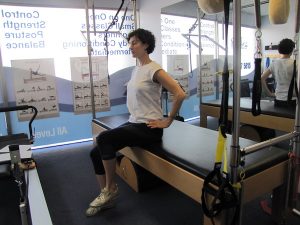
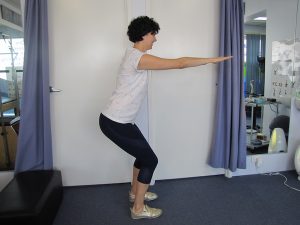 Mini squats
Mini squats